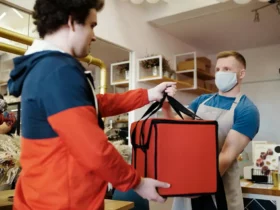When selling on Amazon, it’s important to know which brands are restricted. Amazon has a list of brands that only the brand owner or Amazon can sell. If you try to list any of these brands, you will see a message that says you cannot sell the product and you will not be able to request approval.
Restricted brands are put in place to protect the brand owner’s intellectual property rights and to ensure that customers receive authentic products. Some brands are restricted because they are high-risk items that require special approval. As a seller, it’s important to be aware of these restrictions to avoid any legal issues or account suspensions.
To help sellers navigate these restrictions, there are tools available that can check the availability of restricted brands and provide guidance on how to protect your own brand. In this article, I will explore the topic of Amazon restricted brands, the reasons behind the restrictions, and how to avoid any potential issues when selling on Amazon.
Understanding Amazon Restricted Brands
As an Amazon seller, it’s important to understand what restricted brands are and why Amazon restricts certain brands. In this section, I will explain what ‘restricted’ means and why Amazon enforces restrictions on certain brands.
What Does ‘Restricted’ Mean?
When a brand is labeled as ‘restricted’ on Amazon, it means that only certain sellers are allowed to sell that brand’s products. In order to sell these products, sellers must go through an approval process and meet certain requirements set by Amazon and the brand owner.
Restricted brands are typically well-known and popular brands, such as Adidas, Levi’s, and MAC Cosmetics. Amazon restricts these brands to prevent counterfeit products from being sold on their platform.
Why Does Amazon Restrict Brands?
Amazon restricts brands for several reasons. One of the main reasons is to prevent counterfeit products from being sold on their platform. By restricting certain brands, Amazon can ensure that only authorized sellers are able to sell these products.
Another reason for brand restrictions is to protect the brand’s reputation. By limiting the number of sellers who can sell a particular brand, Amazon can ensure that the brand’s products are sold at a consistent price and quality level.
Overall, understanding Amazon’s restrictions on certain brands is important for any Amazon seller. By following Amazon’s guidelines and requirements, sellers can ensure that they are able to sell products from these brands and avoid any potential penalties or account suspensions.
The Process of Gaining Approval
As a seller on Amazon, getting approval to sell in restricted categories or with restricted brands can be a daunting task. However, with the right approach, it is possible to get approved and start selling in these categories. In this section, I will outline the steps to get approval and the role of invoices in the approval process.
Steps to Get Approval
The process of gaining approval to sell in restricted categories or with restricted brands involves the following steps:
- Check if the category or brand is restricted: Before you start selling in a category or with a brand, it is important to check if it is restricted. You can do this by searching for the category or brand in the Amazon seller central or by using the Amazon seller app. If the category or brand is restricted, you will need to get approval to sell in it.
- Meet the requirements: Once you have identified the category or brand, you will need to meet the requirements for approval. These requirements may include having a certain number of sales, maintaining a certain level of customer satisfaction, or providing additional information about your business.
- Submit the application: After meeting the requirements, you can submit an application for approval. The application process may involve providing additional information about your business, providing invoices for the products you want to sell, or paying a fee.
- Wait for approval: Once you have submitted the application, you will need to wait for approval. The approval process may take several days or weeks, depending on the category or brand.
Role of Invoices in Approval
Invoices play a crucial role in the approval process for restricted categories or brands on Amazon. Invoices are used to verify the authenticity of the products you want to sell and to ensure that you are a legitimate seller.
When submitting an application for approval, you will need to provide invoices for the products you want to sell. These invoices should include the following information:
- The name and address of the supplier
- The name and address of the buyer
- The date of purchase
- The description of the products
- The quantity of the products
- The price of the products
It is important to note that the invoices should be from a legitimate supplier and should not be altered in any way. If the invoices are found to be fraudulent or altered, your application may be rejected, and you may be banned from selling on Amazon.
In conclusion, gaining approval to sell in restricted categories or with restricted brands on Amazon may seem like a challenging task, but it is possible with the right approach. By following the steps outlined above and providing accurate and legitimate invoices, you can increase your chances of getting approved and start selling in these categories.
List of Known Restricted Brands
As a seller on Amazon, it is important to know which brands are restricted from being sold on the platform. Here are some of the popular brands that are currently restricted:
Popular Brands
- Nike
- Adidas
- Apple
- Bandai
- Black & Decker
- Lego
- MAC Cosmetics
Electronics Brands
- Beats by Dre
- Belkin
- Bose
- Breville
- Brother
Beauty Brands
- Anastasia
- Andis
- Aquafina
- Armani
- Art of Shaving
- Asantee
- Australian Gold
- Avon
- Balm Cosmetics
- Beauty by Earth
- Billy Jealousy
- Bliss
- Body Shop
- Borghese
- Braun
- Buxom
- Butter London
Toy Brands
- American Girl
- Anki
- BabyBjorn
- Babyliss
- Bargain Max Decals
- Bayer
- Bayer Advantage
- Birkenstock
- Black Diamond
- Britax
- Brooks
- Brookstone
- Burberry
It is important to note that this list is not exhaustive and may change over time. As a seller, it is important to regularly check for updates and ensure that you are not violating any restrictions when listing your products on Amazon.
Categories with Restricted Brands
As an Amazon seller, it’s important to know which categories have restricted brands. This knowledge can save you time and frustration when trying to list products that are not allowed in certain categories. In this section, I’ll cover the categories with restricted brands and provide more information on each one.
Beauty
The beauty category on Amazon has many restricted brands. Some of the most popular brands that are restricted include MAC Cosmetics, Estée Lauder, and L’Oreal. If you want to sell these brands on Amazon, you will need to go through an approval process. This process can take some time, but it’s worth it if you want to sell these popular beauty products.
Electronics
The electronics category on Amazon also has several restricted brands. Some of the most popular brands that are restricted include Apple, Bose, and Samsung. If you want to sell these brands on Amazon, you will need to go through an approval process. This process can take some time, but it’s worth it if you want to sell these popular electronics products.
Watches
The watches category on Amazon has several restricted brands as well. Some of the most popular brands that are restricted include Rolex, Omega, and Cartier. If you want to sell these brands on Amazon, you will need to go through an approval process. This process can take some time, but it’s worth it if you want to sell these popular watch brands.
Toys & Games
The toys & games category on Amazon has several restricted brands. Some of the most popular brands that are restricted include LEGO, Hasbro, and Mattel. If you want to sell these brands on Amazon, you will need to go through an approval process. This process can take some time, but it’s worth it if you want to sell these popular toys & games products.
In conclusion, it’s important to know which categories have restricted brands on Amazon. By knowing this information, you can save yourself time and frustration when trying to list products that are not allowed in certain categories. Remember that if you want to sell a restricted brand, you will need to go through an approval process.
Selling on Amazon and Restricted Brands
As a seller on Amazon, it’s important to understand the restrictions that come with certain brands. While some brands can be sold by any seller, others are restricted to only the brand owner or Amazon directly. This can pose a challenge for sellers who want to expand their product offerings.
Challenges for Sellers
One of the biggest challenges for sellers when it comes to restricted brands is knowing which brands are restricted. Amazon has a constantly changing list of restricted brands, and it can be difficult to keep up with the changes. It’s important for sellers to do their research and stay up-to-date on which brands they can and cannot sell.
Another challenge for sellers is obtaining approval to sell restricted brands. Approval can be a lengthy process, and not all sellers are approved. It’s important for sellers to have a backup plan in case they are unable to sell a particular brand.
How to Sell Restricted Brands
If a seller wants to sell a restricted brand, they must obtain approval from the brand owner or Amazon directly. The approval process can vary depending on the brand, but it typically involves providing proof of authenticity and agreeing to certain terms and conditions.
Sellers who are approved to sell restricted brands should take extra care to ensure they are following all guidelines and requirements. Violating these guidelines can result in suspension or termination of their seller account.
Overall, while selling restricted brands on Amazon can be a challenge, it can also be a lucrative opportunity for sellers. By doing their research and following the proper procedures, sellers can expand their product offerings and increase their sales on Amazon.
Understanding Gated and Ungated Categories
As an Amazon seller, it’s essential to understand the difference between gated and ungated categories. Gated categories are those that require approval from Amazon to sell, whereas ungated categories are those that don’t require any special permission. In this section, I’ll explain what gated and ungated categories are and how they affect your Amazon selling experience.
What are Gated Categories?
Gated categories are product categories that require approval from Amazon before you can sell in them. Amazon has implemented gating restrictions to protect its customers from counterfeit products, intellectual property violations, and other fraudulent activities. To sell in a gated category, you need to submit an application to Amazon and meet specific requirements, such as providing invoices, product samples, and other documentation.
Amazon has three types of gating restrictions:
- Category Gating: This type of gating applies to entire categories that require approval to sell in, such as clothing, shoes, and jewelry.
- Brand Gating: This type of gating applies to specific brands that require approval to sell in, such as Nike, Adidas, and Apple.
- ASIN Gating: This type of gating applies to specific ASINs (Amazon Standard Identification Number) that require approval to sell in, such as certain electronics, health and beauty products, and toys.
What are Ungated Categories?
Ungated categories are product categories that don’t require any special permission to sell. These categories are open to all Amazon sellers, and you can start selling in them right away. Examples of ungated categories include books, office supplies, and home and garden products.
Selling in ungated categories can be a great way to start your Amazon business, especially if you’re new to selling on the platform. However, keep in mind that ungated categories can be highly competitive, and you’ll need to differentiate your products and offer competitive prices to succeed.
In conclusion, understanding the difference between gated and ungated categories is essential for Amazon sellers. Gated categories require approval from Amazon, while ungated categories are open to all sellers. By knowing which categories are gated and ungated, you can make informed decisions about which products to sell and how to grow your Amazon business.
Role of Brand Owners and Manufacturers
As an Amazon seller, it is essential to understand the role of brand owners and manufacturers in the process of selling restricted brands on Amazon. Here are some key points to keep in mind:
Working with Brand Owners
Brand owners are responsible for protecting their brand and ensuring that their products are sold only by authorized sellers. As a seller, it is important to work with brand owners to obtain authorization to sell their products on Amazon.
To work with brand owners, I recommend the following steps:
- Contact the brand owner directly and request permission to sell their products on Amazon.
- Provide the brand owner with any necessary documentation and information to prove that you are an authorized seller.
- Follow the brand owner’s guidelines for selling their products, including pricing, packaging, and shipping requirements.
By working closely with brand owners, you can ensure that you are selling their products in a way that is consistent with their brand and meets their standards.
Working with Manufacturers
Manufacturers are responsible for producing the products that brand owners sell. As a seller, it is important to work with manufacturers to ensure that you are selling authentic products that meet the manufacturer’s quality standards.
To work with manufacturers, I recommend the following steps:
- Contact the manufacturer directly and request information about their products and how they are produced.
- Verify that the manufacturer is authorized to produce the products you want to sell.
- Request documentation and information to prove that the products you are selling are authentic and meet the manufacturer’s quality standards.
By working closely with manufacturers, you can ensure that you are selling authentic products that meet the manufacturer’s quality standards. This will help you avoid any issues with counterfeit or low-quality products, which could damage your reputation as a seller.
Amazon’s Safety Measures and Consumer Protection
As a responsible e-commerce platform, Amazon takes the safety of its customers very seriously. They have implemented several measures to ensure that only safe and authentic products are sold on their platform. Here are some of the safety measures and consumer protection policies that Amazon has in place:
- Product Testing and Certification: Amazon requires certain products to undergo testing and certification to ensure that they meet safety standards. For example, electrical and electronic products must comply with the safety standards set by the Underwriters Laboratories (UL).
- Restricted Products Policy: Amazon has a strict policy on restricted products that are not allowed to be sold on their platform. These include products that are illegal, hazardous, or infringe on intellectual property rights.
- Transparency: Amazon’s Transparency program enables customers to authenticate products by scanning a unique code on the package. This helps to prevent the sale of counterfeit products and provides customers with peace of mind that they are buying authentic products.
- Brand Protection: Amazon has a Brand Protection program that helps brands to protect their intellectual property rights and prevent the sale of counterfeit products. The program includes tools such as Project Zero, which allows brands to remove counterfeit listings themselves, and Brand Registry, which helps brands to control their product listings and brand content.
- Customer Reviews: Amazon encourages customers to leave reviews of products they have purchased. This helps other customers to make informed purchasing decisions and provides valuable feedback to sellers.
- Return Policy: Amazon has a generous return policy that allows customers to return products that are not as described or are defective. This provides customers with peace of mind that they can shop with confidence on Amazon.
In conclusion, Amazon takes the safety of its customers very seriously and has implemented several measures to ensure that only safe and authentic products are sold on their platform. These measures include product testing and certification, a strict policy on restricted products, transparency, brand protection, customer reviews, and a generous return policy.
Comparison with Other Marketplaces
Amazon Vs. eBay
When it comes to online marketplaces, Amazon and eBay are two of the biggest players in the game. While both offer a wide variety of products, there are some key differences between the two platforms that are worth noting.
One of the biggest differences between Amazon and eBay is the way products are listed. On Amazon, products are listed by individual sellers, but the platform itself is responsible for ensuring that the products meet certain quality standards. eBay, on the other hand, is more of a free-for-all, with individual sellers responsible for listing and selling their own products.
Another key difference between the two platforms is the way they handle restricted brands. Amazon is known for having a strict policy when it comes to restricted brands, with certain brands only being available for sale by the brand owner or Amazon directly. eBay, on the other hand, is much more relaxed when it comes to restricted brands, with many of these brands being available for sale by individual sellers.
In terms of customer service, both Amazon and eBay offer a range of options for buyers and sellers. However, Amazon is known for its excellent customer service, with a dedicated team of representatives available to help customers with any issues they may have. eBay, on the other hand, is known for being a bit more hands-off when it comes to customer service, with most issues being handled by individual sellers.
Overall, both Amazon and eBay offer their own unique advantages and disadvantages. While Amazon may be more strict when it comes to restricted brands, it also offers a more streamlined and reliable shopping experience. eBay, on the other hand, may be more relaxed when it comes to restricted brands, but it also offers a wider variety of products and a more hands-on selling experience for individual sellers.
Retail Arbitrage and Restricted Brands
As an Amazon seller, I have found that retail arbitrage can be a profitable business model. However, it is important to be aware of Amazon’s restrictions on certain brands. Retail arbitrage involves purchasing products from retail stores and reselling them on Amazon. While this practice is allowed on Amazon, there are restrictions on certain brands.
Amazon restricts certain brands from being sold by unauthorized third-party sellers. This is to protect the brand’s reputation and ensure that customers receive genuine products. If you attempt to sell a restricted brand without authorization, your account may be suspended or terminated.
If you want to sell a restricted brand on Amazon, you will need to apply for approval. The application process can vary depending on the brand, but typically involves providing proof of purchase and agreeing to certain terms and conditions. Once approved, you will be able to sell the brand on Amazon.
It is important to note that even if you are approved to sell a restricted brand, Amazon may still revoke your approval in the future. This can happen if the brand decides to tighten its restrictions or if Amazon determines that you are not meeting their standards.
In conclusion, retail arbitrage can be a profitable business model on Amazon, but it is important to be aware of the restrictions on certain brands. If you want to sell a restricted brand, you will need to apply for approval and follow Amazon’s guidelines. By doing so, you can ensure that you are providing customers with genuine products and avoid any potential account issues.
Conclusion
In conclusion, selling on Amazon can be a profitable venture, but it is important to understand the restrictions that come with it. As we have seen, Amazon has a list of prohibited and restricted items that cannot be sold without special permission. This list includes items such as alcohol, tobacco products, and lottery and gambling products.
It is also important to note that Amazon regularly updates its list of restricted products and brands. Therefore, it is advisable to check the most current list before listing any products on Amazon. This will help you avoid any potential issues with Amazon and keep your business running smoothly.
If you are selling a brand that becomes restricted on Amazon, there are a few steps you can take to continue selling the product. One option is to contact the brand and request permission to sell their products. Another option is to find alternative products to sell that are not restricted on Amazon.
Overall, it is important to be aware of Amazon’s restrictions and to comply with them to avoid any potential issues. By doing so, you can ensure that your business remains profitable and successful on the Amazon platform.













